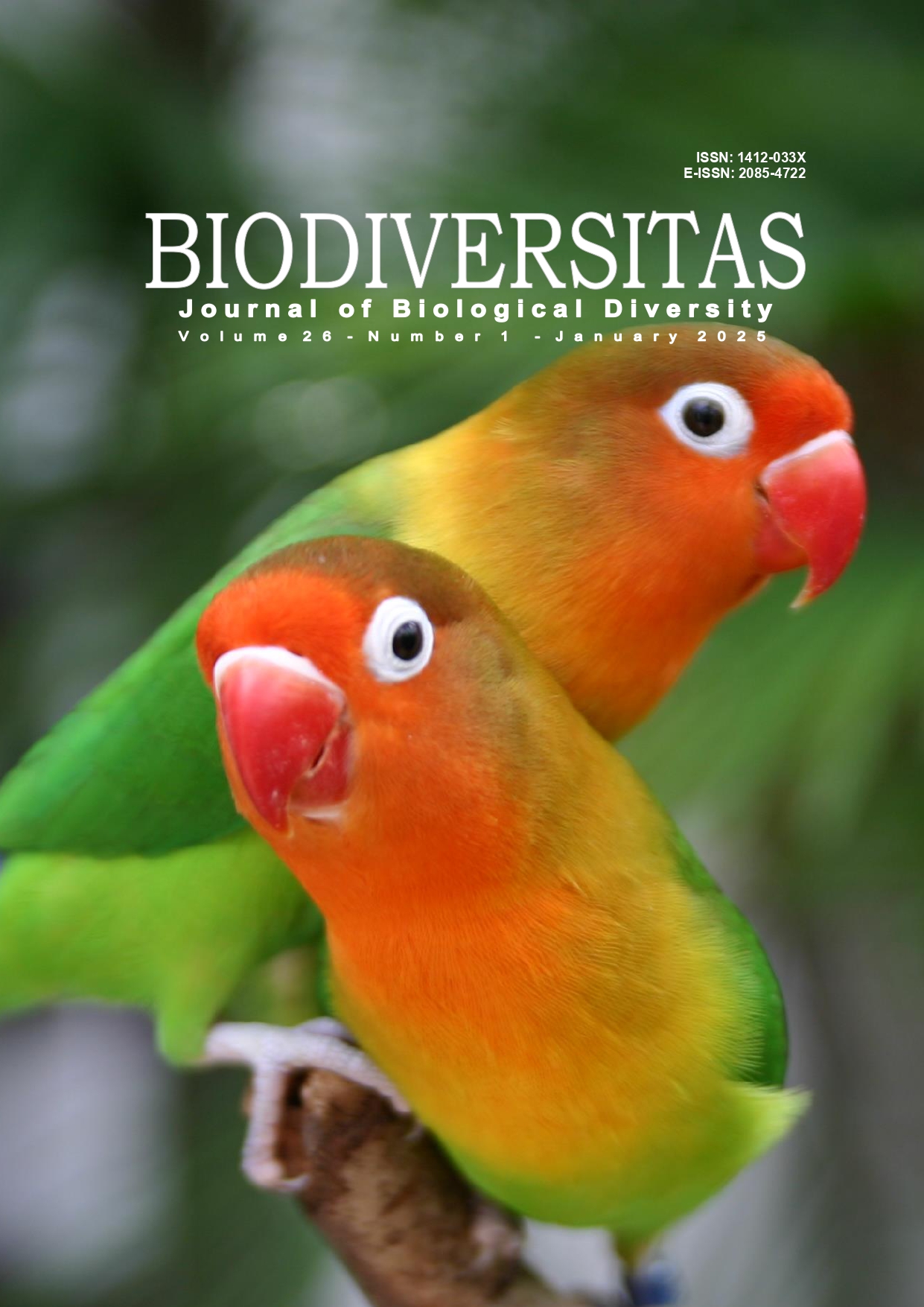Phytochemical analysis and antioxidant activity of Araucaria spp. from Taman Bunga Nusantara, Cianjur, West Java, Indonesia
##plugins.themes.bootstrap3.article.main##
Abstract
Abstract. Sugita P, Ustati MN, Kurniawanti, Syahbirin G, Dianhar H, Rahayu DUC. 2025. Phytochemical analysis and antioxidant activity of Araucaria spp. from Taman Bunga Nusantara, Cianjur, West Java, Indonesia. Biodiversitas 26: 118-126. Araucaria columnaris (AC) and Araucaria cunninghamii (ACu) are members of the Araucaria genus known for their various pharmacological activities. This study aims to analyze the phytochemical properties, Total Phenolic Content (TPC), Total Flavonoid Content (TFC), and antioxidant activities of twigs from AC and ACu, using different solvents (i) acetone (A); (ii) ethanol (E); and (iii) Ethyl acetate (Ea). Quantitative measurements for TPC, TFC, and antioxidant activity were conducted using the Folin-Ciocalteu method, aluminum chloride colorimetric method, and the DPPH (1,1-diphenyl-2-picrylhydrazyl) assay, respectively. Phytochemical screening indicated the presence of phenolics, flavonoids, steroids, and triterpenoids in all extracts. Saponins were found exclusively in acetone extracts, while none contained alkaloids. The TPC is expressed as mg of gallic acid equivalent (GAE) per g of extract, while TFC is presented as mg of quercetin equivalent (QE) per g of extract. The TPC of AC twigs in acetone (ACA) was the highest, followed by ethanol (ACE) and ethyl acetate (ACEa). Similarly, the highest TPC was also observed in acetone (ACuA) for ACu twigs, followed by ethanol (ACuE) and ethyl acetate (ACuEa). Regarding TFC, the order for AC twigs was ACA > ACEa > ACE, while for ACu twigs, it was ACuEa > ACuE > ACuA. ACuE exhibited strong antioxidant activity with an IC50 value of 29.57 ± 1.11 µg/mL, whereas the other extracts displayed moderate antioxidant activity. The results of this research provide preliminary data that can serve as a foundation for future studies.

